How did our mainstream media kena tipu by one Canadian dude?

- 1.6KShares
- Facebook1.6K
- WhatsApp2
*Note: By “mainstream media”, we’re also including international news sites and social media (which means ugaiz).
The earthquake that hit Sabah earlier this month has received all sorts of coverage, particularly focusing on Mt. Kinabalu which was hit the worst, and sadly, the 18 casualties that resulted. This was very closely followed by the reasons the earthquake happened, two of which have been covered by CILISOS:
- Tectonic plate movements
- Oarfish washing ashore
- Tourists stripping on Mt. Kinabalu
So in this article we’ll be touching on point no. 3, which is made interesting because members of the Kadazandusun community believed the earthquake was caused by a group of 10 tourists stripping naked and urinating at the site despite being told not to.
The Sabah authorities started a hunt for the tourists and one of them, a travel blogger named Emil Kaminski made several posts on social media claiming to have been one of the group and rubbishing the local superstitions and mocking Sabah politician Masidi Manjun.

But when we REALLY became the butt of the joke was when Emil eventually revealed that…
He was not even in Malaysia at that time!
In a YouTube video posting, Emil pretty much spilled the beans that his involvement was a massive hoax. Watch the video below for a full explanation (Language warning!)
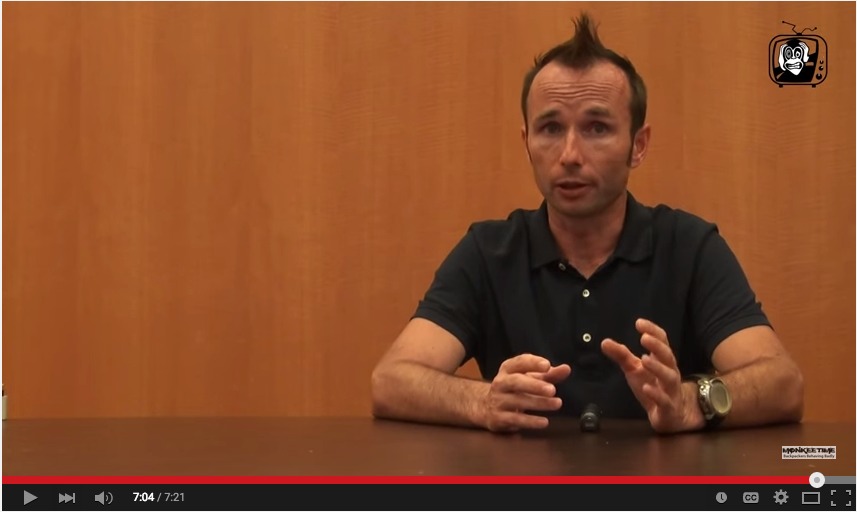
So as Emil himself mentioned, Malaysian and international news sites ate the story so quickly that what was meant to be a trolling of people blaming the nude tourists for the earthquake evolved into a trolling of the media. But what happened? How did the mainstream media get suckered in by one Canadian dude? Well…
1. No one bothered to do any fact-checking

Last week, we attended a few journalism panels at Cooler Lumpur last week on the pace of journalism today (Our editor was a part of that panel #namedrop) and one of the topics they discussed was whether or not accuracy is being sacrificed for speed.
Compared to newspapers and magazines with fixed publishing schedules, many online news portals aim to break news within hours if not minutes after it happens – the “big scoop,” as they say back in the day when reporters wore fedoras and trenchcoats. With this kind of pressure, a journalist may not have the time to check sources to make sure they’re accurate, compounded by the fact that social media sites such as Facebook and Twitter have also become sources of info (we do it too #guilty).

We weren’t able to determine when Emil’s name became part of the group of tourists in Mt. Kinabalu, the earliest mention we found was from a Rakyat Post report (not that we’re saying it’s them) where they used the word “allegedly”, but our theory is that other local and international news portals picked up on the original story, dropped the “allegedly,” and cemented Emil’s involvement as a “fact” or “truth”. Of course, it also doesn’t help that he was egging the story on since he hinted that he was hiding in Tawau, and at the same time, arrested.
Even on news of his arrest, hasn’t anyone wondered how he was able to tweet from jail?

In his video, Emil himself asked
“I found it astounding that not even the smallest amount of journalistic inquiry was conducted … did anyone even talk to the police? Did the police know whom they arrested? Did they know I was not in Malaysia? – Emil Kaminski, as quoted in Youtube video (6:20)
This point is also closely-related to the fact that…
2. Errbody wants the pageviews and shares
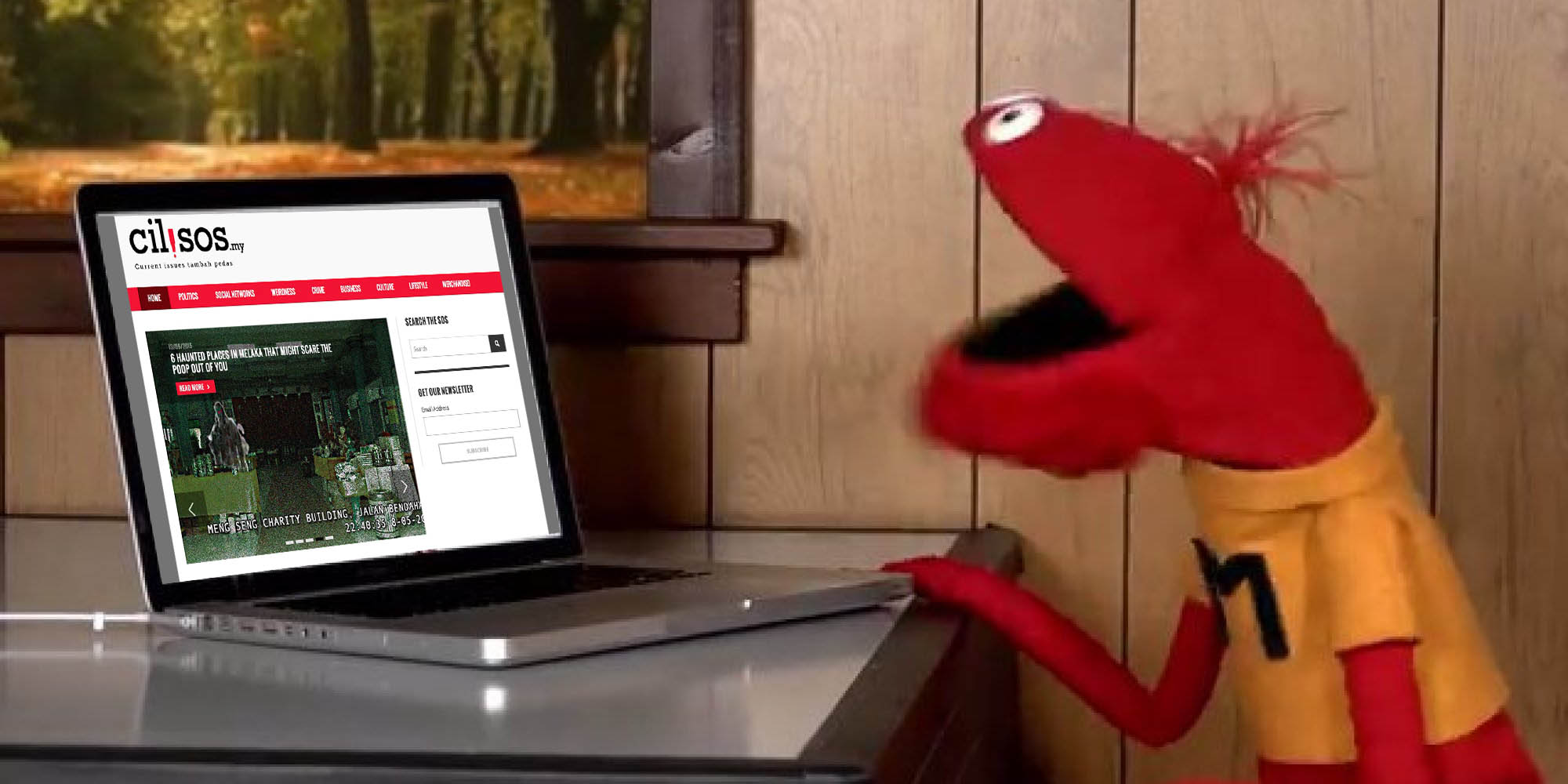
One of the points brought up during the journalism panel was that at the end of the day, the media industry is still a business. And for a business to run, there needs to be income and profits – mostly generated through advertising. And trust us, most websites (like us. Boo.) aren’t exactly rolling in the moolah since banner ads are REALLY cheap. So you really REALLY gotta get people to actually visit the site, usually via clickbait titles and eye-catching feature images to name a few (Ohai CILISOS).
Most of the time though, a lot of views may go to an “exclusive” story or to the publication that was the first to break it so there’s always that yearning for a “viral hit” to bring the traffic home to mommy. The problem with this is, again, fact-checking. The news needs to be out fast, and it should be accurate… but sometimes compromises are either willingly or unwillingly made. The Columbia Journalism Review published an article detailing a case study of digital investigative reporting and how hype and fact-bending is embraced in order to meet financial targets.

There’s also this really interesting article by journalist John Bohannon on how he managed to con magazines, websites, TV shows, and (potentially) millions of people into believing that eating chocolate helps with weight loss. We recommend that you read the whole saga for yourself, but here’s the important bit:
“The key is to exploit journalists’ incredible laziness. If you lay out the information just right, you can shape the story that emerges in the media almost like you were writing those stories yourself. In fact, that’s literally what you’re doing, since many reporters just copied and pasted our text. … Almost no one asked how many subjects we tested, and no one reported that number. Not a single reporter seems to have contacted an outside researcher. None is quoted.” – John Bohannon, as quoted in io9.com.
A reminder that we’d make here is that most of the information about Emil Kaminski’s exploits in Sabah came from Emil Kaminski himself, which brings us to the next point…
3. News shared on social media becomes news shared on social media
Okay fine, let’s clarify the title a little… what we mean is that nowadays, posts or the reaction to posts that get shared on Facebook and Twitter often becomes news in its own right, gets published, and becomes even more news.
Haiyo. Facebook and Twitter posts get reported as news la.
Y’see the general Facebook-sharing public won’t scrutinize a piece of news or post if it looks legit enough before sharing it with some obligatory personal comment at the top. This eventually picks up momentum, becomes viral, and sooner or later some reporter is going to be like “OMG This is breaking news” and write a story on it. However, there are both good and bad points to this. Let’s start with the bad.
The Bad:
What we think happened in the Emil saga is that his first post mocking Sabah politician Masidi Manjun (who may not have made the original statement, BTW) received so much attention from online users that it became a news goldmine because:
- There’s now a face that can be put to the 10 hikers (whose identities were not known at the time)
- People were just starting to hear about it
- He was clearly unrepentant and even downright insulting
- Every story needs a good villain
So reporters took the bait; hook, line, and stinker. With the practice of news pickups, where other news organizations republish or use stories from other organizations, it was a misinformation avalanche just waiting to happen. We’ve seen this happen locally before, such as when Utusan Malaysia mistakenly republished a fake story from a satirical news site about a Catholic priest converting to Islam, and of course with this Email Emil Kaminski saga. To be fair though, we would probably have made the same mistake ourselves if all our writers weren’t busy with other stories.
The Good
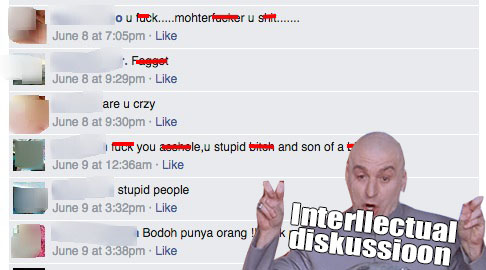
While some of us might ask “Is this even news?” when reading news reports of posts or comments from social media, it actually does serve a purpose as a barometer of sentiment – a way to gauge how people feel about certain things or even bringing up certain issues into the public spotlight. The recent barrage of comments against gymnastics gold medalist Farah Ann Abdul Hadi’s attire, while amusing, may also be indicative of a divide between religious fundamentalism and liberalism (for example). Either way, we see it as a good way to encourage discussions or discourse, which is great. Now, all we need is to move the discussion beyond cursing the other person or wishing bad things happen to their mother. 🙄
4. There’s more effort put in hyping the story than there is correcting it

The media, particularly western publications, had a field day mentioning how a bunch of tourists strippers caused an earthquake – with catchy titles such as the one above. However, when Emil exposed his epic troll, headlines were a lot more muted, if at all. We only managed to find a handful of articles that wrote specifically on Emil’s trolling. What we found was that most online publications either just removed the sentences mentioning his involvement with the group, or inserted a sentence saying it was all a prank, if at all.
This is actually all fine, and in fact we’re quite happy to say that most of the Malaysian news sites have done so (last we checked on June 16th) but unfortunately we can’t say the same for international ones, such as this one by the New Zealand Herald that still has a paragraph stating that Emil was arrested:

While this might seem to be nit-picky, it does come back to the fact that this is just inaccurate information sitting and waiting for someone to come across and read it. And it’s not as if it’s hard making corrections to an online article… our watch article was essentially a non-stop series of edits as readers wrote in to correct us. This isn’t us being all high and mighty about it – if we were, we would’ve gotten the watch article right the first time – but it’s more about the transparency and integrity for accurate reporting. Whether it’s a quiet little edit or a note in italics apologizing for the error, the important part here is that the correct information has been conveyed.
Obviously Emil is also keeping track of this since…
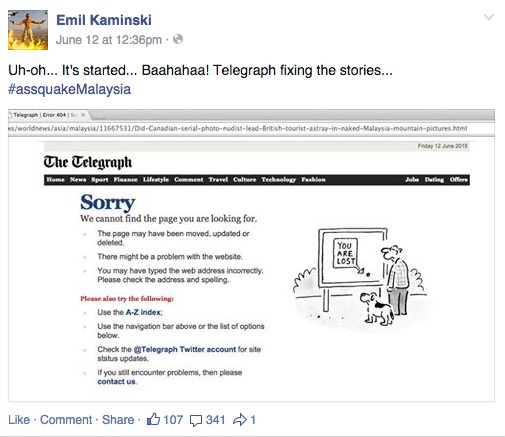
Does this mean we can’t trust the online media anymore?
Welllll….. yes and no. We think that for the most part, the online media is still pretty accurate, but we should start developing the habit of fact-checking and not taking everything at face value. While we don’t agree with Emil’s stand since the traditions and beliefs of any local culture SHOULD be respected, we give him the credit for a masterful troll and for exposing the widening holes in current reporting practices. Or maybe the credit should go to the publications that so willingly lapped up and spread the story we dunno. Heh.
In fact, this problem has already surfaced in some countries, where journalists are beginning to depend on fact-checking sites rather than verifying the information themselves. Some (we assume) old-school journalists also see this development as a “symptom of a failing media” too afraid to make judgement calls on what is the “truth”. We honestly can’t come up with suggestions to improve or fix this, but perhaps this is when the public should also start questioning the “facts” and calling out writers on their research. John Bohannon of the chocolate diet article (mentioned in point #2) had this to say:
“There was one glint of hope in this tragicomedy. While the reporters just regurgitated our “findings,” many readers were thoughtful and skeptical. In the online comments, they posed questions that the reporters should have asked.” – John Bohannon, as quoted in io9.com.
Just… try to not insult our mothers while you’re at it, k?
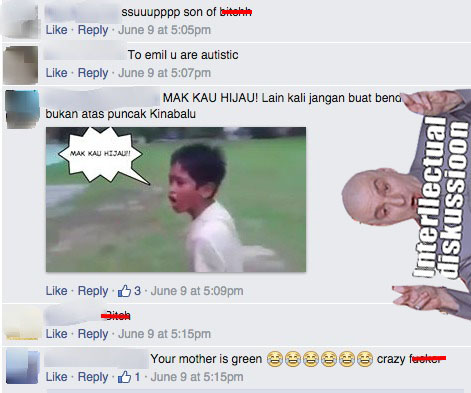
- 1.6KShares
- Facebook1.6K
- WhatsApp2





